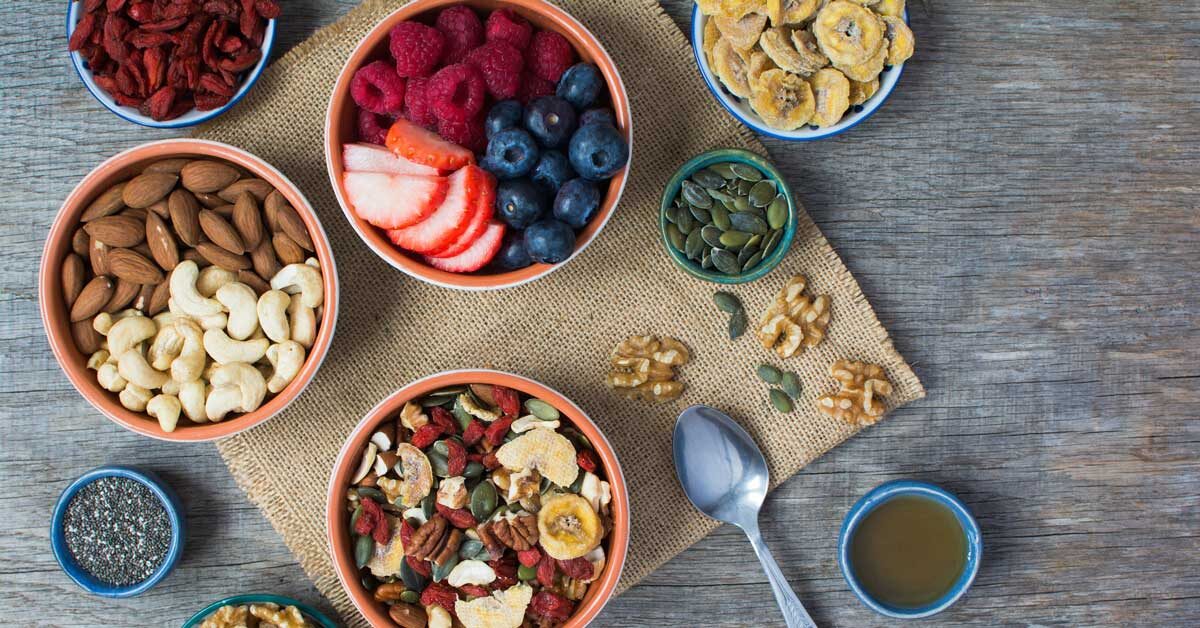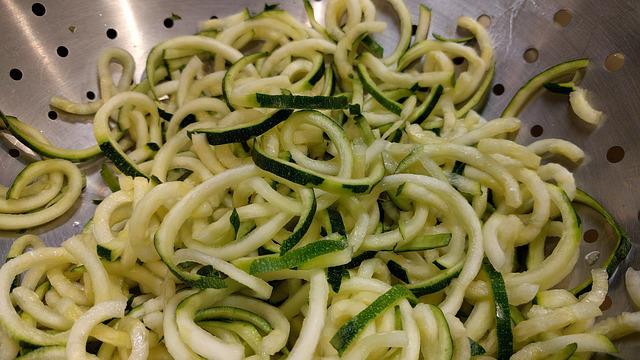
Dr. Loren Cordain, a scientist who specializes in nutrition and exercise physiology is a prominent supporter of the Paleolithic lifestyle. The Paleolithic diet is often misunderstood. Let's look at the myths associated with this diet to see why it is important to eat healthy foods. Here are some myths that surround this diet.
Dr. Loren Cordain
Dr. Loren Cortain is a widely recognized authority in human evolution. He has appeared on the front page of The New York Times, Wall Street Journal, and Dateline NBC. He is also the leading expert in natural human nutrition. He has published more than 100 peer reviewed scientific papers on the topic and has done groundbreaking research about the health benefits of eating food derived from Stone Age ancestors.
Dr. Cordain's research is focused on the evolutionary as well as anthropological foundations of our diets. Many of his publications are concerned with the nutritional compositions of wild animals and plants that were eaten by early human beings. He is the world's foremost authority on Paleolithic diets, and has given numerous lectures on the subject. His books on the topic are widely read and popular. Find out more about Dr. Cordain by reading his biography.
His research

Loren C. Cordain's research reveals a connection between diet and some diseases of modern civilisation. Stone Age people ate less sodium (and potassium) than modern-day diseases. The Middle East also had a higher intake of fruits and vegetables. This may explain some of the diseases of modern civilisation. We haven't been eating more fruits, vegetables and vegetables, even though diet may be a factor in some of the problems.
Paleo is one of today's most popular health movements. It discourages grains, whole grains and legumes, as well dairy, processed foods, and vegetable oil. In fact, many researchers have made the same recommendation. Paleo diet has been shown more effective than other diets in improving your immune system and health. Although Dr. Cordain does not claim that humans could live without these foods, the research shows that many people can benefit from them.
His book
This book will explain the science behind Paleolithic eating habits. American scientist Loren Cordain is a specialist in nutrition and exercise physiology. His book Eat to Live, which he wrote, is the first to be published by a leading Paleolithic nutritionist. Cordain's methods may be questioned by some, but there are numerous scientific studies that back him up.
Loren Cordain is an associate professor at Colorado State University. He is also a world-renowned expert in exercise physiology and nutrition. The Paleo Diet was developed by Cordain and other world-renowned scientists. This is the first book written by one of the founders of this fad diet. The book explains how Paleo Diet transformed our lives. Get it now to make a permanent change in your diet.
His views on nutrition

One of Dr. Cordain’s most important contributions to modern healthcare is his research on diet. He holds a PhD in health sciences from the University of Utah. He has taught at Colorado State University since 1982. He has been featured on Dateline NBC as well as the Wall Street Journal and the New York Times. He is widely regarded by the world's leading authorities on natural diets.
Cordain gives valuable insight into the advantages of the paleolithic lifestyle by looking at its history. Paleo was introduced by Dr. Boyd Eaton and has since become one of most popular dietary trends. Dr. Cordain continues his research on the health benefits of the Paleo diet for all ages, even children. He also sheds light on legumes, dairy, and carbohydrates, revealing the reality of what our bodies were designed to eat.
His critics
Criticians of Loren cordain’s Paleo Diet use a variety of facts and examples to prove that it is not healthy. While lean meat contains a high proportion of protein, this diet is devoid of essential nutrients such as calcium, salt, and folic acid. Furthermore, it doesn't provide protection nutrients like vitamin E and omega-3 oils.
FAQ
Do I need any special equipment to cook?
No, you don't need any special equipment to learn to cook. However, having the right tools can make cooking easier. To make pasta easier, you can use a knife to cut the pasta and a whisk to whip up egg whites to stiff peaks. It makes cooking much easier and quicker.
Can you learn to cook on your own?
You can learn to cook by yourself! No matter how much you know, cooking is something that everyone enjoys. You can learn to cook by starting at home. Start small with simple things like spaghetti sauce or pancakes for breakfast. It is important to experiment with new recipes to learn how to cook. You might make a few errors along the way.
Cooking can take anywhere from a few hours to several months depending on the skill level. It's important that you remember that cooking does not mean following a recipe. There are many methods to prepare food.
What can I learn about cooking?
Cooking classes are available throughout the country. You can find courses in baking, pastry and wine tasting at many schools. A local community college, vocational school, or private institution can offer classes in cooking.
How Much Does it Cost to Learn Culinary Arts Skills?
Prices for studying culinary arts vary widely. For example, a four-year degree typically costs around $40,000. A two year associate's degree might cost less than $5,000. Tuition rates vary depending on what program you choose. Public institutions are more expensive than private institutions.
What are some basic cooking skills?
Basic cooking skills include knowing how to read recipes, measure ingredients, cook food safely, and clean up after yourself. If you want to be able to cook for yourself, then you need to learn these basic skills. Cooking is an excellent way to save money because you don’t have the need to eat out as often.
Statistics
- You'll be amazed that over 90% of CIA students receive scholarships and grants to finish their culinary studies. (ischoolconnect.com)
- On average, chefs earn $58,740 a year, according to the BLS. - learnhowtobecome.org
- The median pay for a chef or head cook is $53,380 per year or $25.66/hour, according to the U.S. Bureau of Labor Statistics (BLS). (learnhowtobecome.org)
External Links
How To
How to make an omelet that is perfect
Omelets are a favorite breakfast food of mine. How can you make them perfectly? Many different recipes and methods have failed to work for me. So I am sharing some tips and tricks today to help you make fluffy, delicious omelets every morning.
We should first know that eggs are very temperamental ingredients when making omelets. The eggs must be fresh from an organic source and kept at room temperature until they are ready to be cooked. The yolks and whites will not form properly if they aren't kept cold enough. This causes your omelets to look oddly colored. It is best to use room-temperature eggs if you are going to cook them right away.
You might also try separating the egg before adding to the pan. You don't want the white to get mixed with the yolk, as this could cause the egg to curdle.
If you add the egg directly onto the stovetop, you might end up burning the bottom part of the egg, which would ruin the texture of your omelet. Instead, put the egg in the microwave for 10 seconds before putting it into the pan. The microwave heat cooks the eggs just right without overcooking them.
Next, let's discuss mixing the eggs. Mix eggs well together. To do this, take the bowl from the mixer and flip it upside-down. Now shake the bowl vigorously. This allows the air to be whipped and the egg to be mixed thoroughly.
The fun part begins - you need to pour the milk into your mixture. Pour half the milk into the beaten egg mixture and then fold in the eggs. Do not worry if you see streaks of egg; they will disappear when the omelet is flipped.
After folding the eggs, place the pan on medium heat and wait for the oil to start sizzling. Once the oil starts getting hot, add 1/4 cup of butter to the pan and swirl it around to coat the entire surface of the pan. Open the lid and sprinkle salt on the pan. Salt will prevent the omelet sticking to the pan.
Once the omelet has formed completely, cover the pan and let it set for a few minutes. Use a spatula to flip the omelet or turn the pan upside-down. Cook the other side for another minute or two. Serve immediately after removing the omelet from its pan.
This recipe works best with whole milk, but skimmed milk also works.